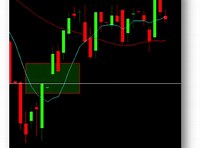Transparency Rules…Or Does It?
Posted by Colin Lambert. Last updated: February 11, 2021
There is an assumption that regulators are uniformly in favour of total transparency in markets – and this is often backed up by their public statements. Without doubt how market participants behave contributes to the trading environment in a given instrument or on a specific venue and there is a need for transparency there.
Where it is less clear, however, that transparency works, is in best execution and an Occasional Paper from the UK’s Financial Conduct Authority (FCA) appears to back that statement up.

The paper, Banning Dark Pools: Venue Selection and Investor Trading Costs indicates that pre-trade transparency is unhelpful to investors when trading (the research is based upon UK equity markets). Indeed it concludes, “This paper provides evidence that investors can reduce their execution costs by selecting venues with less pre-trade transparency, such as dark pools or venues with similar characteristics.”
The researchers say they achieve their results after controlling for a wide set of fixed effects at the investor, broker, and stock-day level. “Interestingly, we find that the effects of dark and periodic auction (PA) trading are very similar, suggesting that these trading mechanisms are close substitutes in terms of their effect on execution costs.”
The paper adds that dark pools offer less transparency than PA venues as they do not disclose any volume information while PAs reveal ‘indicative auction uncrossing volumes’, but unlike central limit order books, they do not disclose buying and selling interest at individual price levels.
The substitution of one absolutely dark mechanism for one slightly less so is the key to the findings where the authors find that the ban on Dark Pools imposed by the European Union in 2018 – the so-called Double Volume Cap or DVC – did not have any significant impact on investors’ execution costs. “Investors that relied heavily on dark pool trading before the ban did not experience a change in their implementation shortfall, relative to a control group of investors that did not rely much on dark trading. The same is true for the subsequent removal of the DVC,” the paper states.
Interestingly, and perhaps refuting the claim that the ban had little discernible effect, after it was lifted, the paper finds, participant volume moved back to dark pools. The authors suggest this implies a preference for dark pools over periodic auctions when both options are available, however do note this preference is not universal, with significant volumes remaining on PA venues.
Perhaps the biggest question to be asked of the dark pool mechanism is whether it improves market quality and here it very much depends upon where you sit. The paper is yet another example of academia providing evidence that transparency of order is detrimental to the executing party, especially in an environment in which HFT are prevalent, but that does not take into account the importance assigned to the distribution of information.
The FCA paper notes that recent analysis indicates that during the ban lit market liquidity improved, but this is likely to have been a factor of what seems to be the preferred mechanism not being available. More volume on lit markets means more market data, enabling all traders to make ‘informed’ decisions.
The question is, does transparency, fast market making and slippage improve market quality?
The question becomes then, who is in need of most protection, and this feeds, in its own way, into the recent furore over the Reddit traders squeezing short sellers out of positions. Is it the large trader, who is often executing on behalf of a large number of smaller investors who will all suffer from slippage if the order is visible to market makers at an early stage; or is it the market making firm or small trader that might be run over?
Logic suggests that the best way to handle large orders is to find a match for as much of the flow as possible before “going public” and that means dark mechanisms. The PA mechanism clearly offers a good alternative – and there are those that believe the future of the FX swaps market lies in periodic auctions – but what does not is going to the public market straightaway.
By enabling large trades to be matched off exchange, the investors behind the trade get execution with minimal signalling risk and slippage and market makers do not get run over by the trade hitting the market (assuming they actually price is suitable size to feel the pain). Yes, these market makers will see reduced flow, and for those that are all about churning flow for a fraction of a pip tens of thousands of times a day this would be a hit to the business.
But then that broadens the question further by asking, exactly what do fast market makers in the minimum increment of lots actually provide to the market? Exchanges will tell you they add a lot but the reality is their benefit is in increased fees to the exchange, not necessarily to market quality.
A good market structure allows traders of all shapes and sizes to interact, but sometimes it seems as though there are good reasons to segregate. By all means allow those market makers dealing at the minimums to engage with smaller traders, they are a good match. Putting them with large institutional investors when they are executing large tickets, however, seems less beneficial. What these firms require is engagement with serious market makers who are willing to assume some risk – to be a principal rather than quasi-broker. If that means reducing transparency then who is to argue that is detrimental to market quality?





